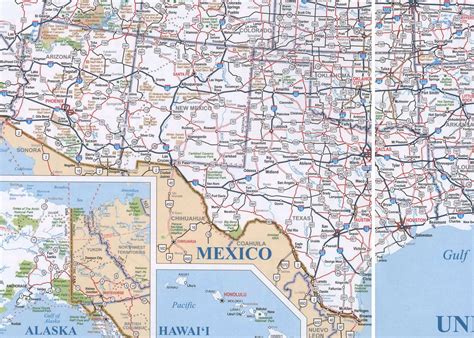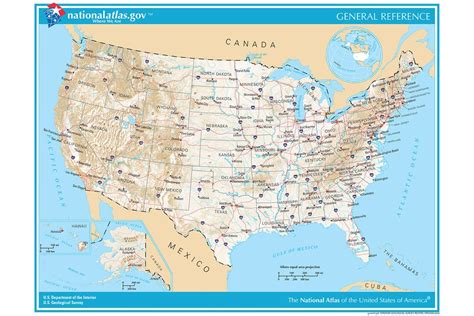Map Of The Southwest United States

The Southwest United States is a region known for its diverse landscapes, rich cultural heritage, and unique blend of urban and natural environments. Spanning across parts of Arizona, New Mexico, Texas, Nevada, Utah, and California, this region is home to some of the most spectacular national parks, monuments, and forests in the country. The map of the Southwest United States reveals a complex geography, with the Colorado Plateau, the Great Basin, and the Sonoran Desert being some of its most distinctive features.
For travelers, adventurers, and those interested in history and culture, understanding the layout and key locations of the Southwest is essential. The region is dotted with significant cities, each offering a unique perspective on the area's history, art, and cuisine. Cities like Santa Fe, New Mexico, known for its vibrant arts scene and Spanish colonial architecture; Phoenix, Arizona, a hub for business and sports; and Las Vegas, Nevada, famous for its entertainment and nightlife, are just a few examples of what the Southwest has to offer.
Key Points
- The Southwest United States encompasses parts of Arizona, New Mexico, Texas, Nevada, Utah, and California.
- The region is characterized by diverse landscapes, including the Colorado Plateau, the Great Basin, and the Sonoran Desert.
- Significant cities in the Southwest include Santa Fe, New Mexico; Phoenix, Arizona; and Las Vegas, Nevada, each known for its unique cultural, historical, and entertainment offerings.
- The Southwest is home to numerous national parks and monuments, such as the Grand Canyon, Monument Valley, and Zion National Park.
- The region's rich cultural heritage includes influences from Native American, Spanish, and Mexican cultures, among others.
Geographical Features of the Southwest

The geography of the Southwest United States is as varied as it is breathtaking. The Colorado Plateau, which covers a significant portion of the region, is known for its rugged terrain, deep canyons, and unique rock formations. The Grand Canyon, one of the most iconic natural wonders in the United States, is located within the Colorado Plateau and attracts millions of visitors each year. The Great Basin, characterized by its sagebrush deserts and mountain ranges, offers a stark yet beautiful contrast to the more arid landscapes found in parts of Arizona and Nevada.
The Sonoran Desert and Its Unique Features
The Sonoran Desert, which spans across southern Arizona and parts of California, is the largest desert in the United States and is home to the iconic saguaro cactus. This desert is not only notable for its flora and fauna adapted to the harsh desert conditions but also for its unique geological formations, such as the sand dunes found in areas like the Imperial Sand Dunes in California. The biodiversity of the Sonoran Desert is surprisingly rich, with many species of mammals, birds, and reptiles calling this arid landscape home.
| Geographical Feature | Description |
|---|---|
| Colorado Plateau | A region of high deserts, plateaus, and mountain ranges in northern Arizona, southern Utah, northwestern New Mexico, and southwestern Colorado. |
| Great Basin | A large, arid drainage basin covering parts of Nevada, Utah, Arizona, Oregon, and California, characterized by its sagebrush deserts and numerous mountain ranges. |
| Sonoran Desert | The largest desert in the United States, covering southern Arizona and parts of California, known for its unique biodiversity, including the saguaro cactus. |

Cultural and Historical Significance of the Southwest

The cultural and historical landscape of the Southwest United States is as complex and multifaceted as its geographical one. With influences from Native American tribes, Spanish colonizers, and Mexican culture, the region boasts a rich tapestry of traditions, languages, and customs. The adobe architecture, vibrant arts scene, and traditional cuisine of Santa Fe, New Mexico, are just a few examples of how these influences have shaped the identity of the Southwest.
Monument Valley, straddling the Arizona-Utah border, is not only a symbol of the American West but also a sacred place for the Navajo Nation, reflecting the deep connection between the land and the indigenous peoples who have lived there for centuries. The historical missions in California, the ancient cliff dwellings in Mesa Verde, Colorado, and the countless petroglyphs scattered throughout the region all testify to the enduring legacy of human presence in the Southwest.
Preservation Efforts and Tourism
Given the fragile balance between preservation and tourism, there is a growing emphasis on sustainable travel practices in the Southwest. Visitors are encouraged to explore the region’s many national parks and monuments responsibly, respecting both the natural environment and the cultural sites. By supporting local communities and choosing eco-friendly tour operators, travelers can contribute to the conservation of the Southwest’s unique landscapes and cultural heritage.
| Cultural/Historical Site | Location | Description |
|---|---|---|
| Grand Canyon | Arizona | One of the most iconic natural wonders in the United States, attracting millions of visitors each year. |
| Monument Valley | Arizona/Utah | A symbol of the American West and a sacred place for the Navajo Nation. |
| Mesa Verde | Colorado | Known for its well-preserved ancient cliff dwellings, a testament to the lives of the Ancestral Pueblo people. |
What are the must-visit national parks in the Southwest United States?
+The Southwest is home to numerous national parks, including the Grand Canyon, Zion National Park, Bryce Canyon National Park, and Monument Valley, among others. Each park offers unique landscapes and opportunities for outdoor activities like hiking, camping, and sightseeing.
How can I respect the cultural and historical sites in the Southwest?
+Respecting cultural and historical sites involves being mindful of local regulations, staying on designated trails, not removing any artifacts, and supporting local communities through responsible tourism practices. It's also important to learn about the history and significance of the sites you visit to deepen your appreciation and respect for these areas.
What are some unique cultural experiences in the Southwest?
+The Southwest offers a rich cultural tapestry, with experiences ranging from attending a traditional Native American ceremony, exploring the adobe architecture and art scene in Santa Fe, to enjoying the vibrant nightlife and entertainment options in Las Vegas. Each city and town has its own unique cultural flavor, waiting to be discovered.
In conclusion, the Southwest United States is a region of immense beauty, rich cultural heritage, and unique geographical features. Whether you’re drawn to its majestic landscapes, vibrant cities, or historical sites, the Southwest has something to offer every kind of traveler and explorer. By approaching this incredible region with respect, curiosity, and a commitment to sustainability, we can ensure that its wonders are preserved for generations to come.



